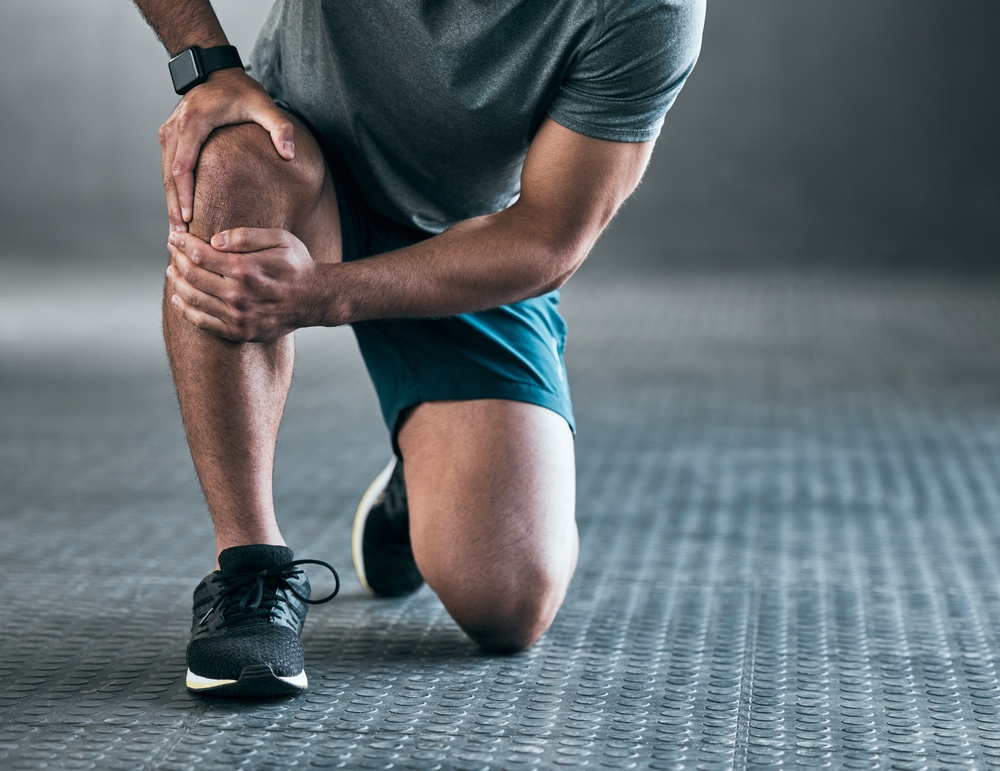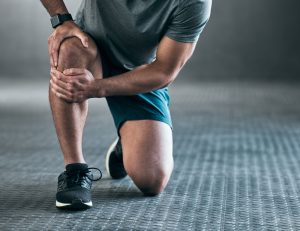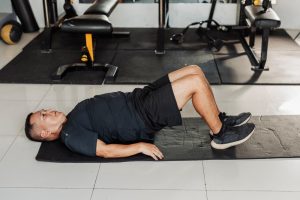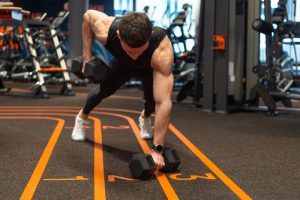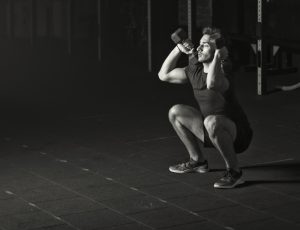The five best leg exercises for people with knee problems are glute bridges, wall sits, straight leg raises, seated leg extensions, and standing hamstring curls—all designed to strengthen your legs while keeping your knees in fixed, comfortable positions.
These exercises target your glutes, quadriceps, and hamstrings without the painful impact or excessive knee movement that makes traditional leg workouts unbearable.
Keep reading to learn the proper form, progression techniques, and safety guidelines that will help you build stronger legs without aggravating your knees.
Why Your Knees Need Special Attention During Leg Workouts
Knee pain doesn't just show up during workouts—it infiltrates your daily life, making simple activities like climbing stairs or getting out of chairs uncomfortable reminders of joint dysfunction.
Millions of people abandon leg exercises entirely because traditional movements like squats, lunges, and jumping create the exact stress patterns that inflame already sensitive knee joints.
The problem with conventional leg exercises:
- High-impact movements that compress knee cartilage
- Excessive knee flexion that strains ligaments
- Rapid directional changes that destabilize the joint
- Weight-bearing positions that amplify existing pain
Here's what most people don't realize: strengthening the muscles around your knees actually reduces joint pain and improves long-term knee health.
Your glutes, quadriceps, and hamstrings act as shock absorbers and stabilizers, taking pressure off the knee joint itself when they're properly developed.
The solution lies in exercises that target these muscle groups while keeping your knees in comfortable, stable positions.
Instead of forcing your knees through painful ranges of motion, effective knee-friendly exercises work through hip extension, isometric holds, and controlled movements that build strength without aggravation.
Physical therapists consistently recommend this approach because it breaks the cycle of pain and inactivity that leads to further muscle weakness.
When you understand which movements protect your knees while still challenging your muscles, you can maintain an active lifestyle without the fear of making your condition worse.
Hip and Glute Foundation – The Glute Bridge
Physical therapists rank the glute bridge as their top recommendation for people with knee problems because it delivers maximum muscle activation with virtually zero knee stress.
While your knees remain in a fixed, comfortable position throughout the entire movement, your glutes and hamstrings work through their full range of motion via hip extension.
Proper Form Execution
- Setup: Lie on your back with knees bent and feet placed hip-width apart
- Drive: Push through your heels (never your toes) to lift your hips upward
- Peak: Create a straight line from knees to shoulders at the top position
- Hold: Squeeze your glute muscles to maintain the bridge for 10 seconds
- Lower: Control the descent slowly back to starting position
The beauty of this exercise lies in its joint-friendly mechanics.
Your knees stay locked in the same angle while all the work happens at your hip joint, eliminating the flexion and extension that typically aggravates knee pain.
Progressive Development Strategy
Foundation phase: Master 3 sets of 30-second holds before advancing to more challenging variations.
This timeline ensures your glutes develop the endurance needed for proper form under increased demands.
Intensity progressions:
- Add weight plates across your hips or stomach
- Progress to single-leg bridges for unilateral strength development
- Combine weight and single-leg variations for maximum challenge
Single-leg bridges deserve special attention because they expose and correct strength imbalances between sides while demanding enhanced core stability.
Most people discover their dominant side compensates for weakness on the other side—information that proves valuable for preventing future knee problems.
Isometric Strength Building – The Wall Sit
The wall sit transforms a simple wall into your training partner, providing the stability your body needs while your muscles work intensely in a completely static position.
This bodyweight exercise ranks among the most knee-friendly options because your joints never move—eliminating the compression, shearing, and impact forces that typically cause knee pain during leg exercises.
Setup and Execution
- Position: Stand with your back flat against a wall, feet shoulder-width apart
- Descent: Slide down the wall slowly until your thighs reach parallel to the floor
- Hold: Maintain the position for 5-10 seconds initially, keeping your entire back pressed against the wall
- Return: Use your glute muscles to work slowly back up to standing
The wall prevents backward movement while forcing your quadriceps, glutes, and hamstrings to support your body weight.
Since your knees remain locked at a fixed angle throughout the hold, there's zero joint movement to trigger pain or inflammation.
Progressive Intensification
Resistance band method: Loop a band around your thighs to add lateral resistance, forcing your glutes to work harder while maintaining the wall sit position.
This progression targets hip stabilizers that often weaken when people avoid leg exercises due to knee pain.
Single-leg advancement: Lift one leg during the hold, switching legs after predetermined intervals to ensure balanced development. This variation doubles the load on your supporting leg while challenging your core stability and exposing strength imbalances between sides.
The isometric nature of wall sits makes them uniquely valuable for people with knee problems.
Your muscles generate significant force without joint movement, building strength through sustained contraction rather than repeated flexion and extension.
This approach allows you to develop serious leg strength while your knees remain in their most comfortable, stable position.
Quadriceps Strengthening Without Knee Stress
Strong quadriceps muscles act as shock absorbers for your knees, reducing the impact forces that travel through your joint during daily activities.
The challenge lies in strengthening these muscles without triggering the knee pain that drives people away from leg exercises in the first place.
These two exercises solve that problem through positioning and movement patterns that completely eliminate knee joint stress.
Straight Leg Raises: Floor-Based Quadriceps Development
This lying position exercise targets your quadriceps and hip flexors while keeping your knee completely stationary throughout the movement.
Execution steps:
- Setup: Lie on your back with one knee bent and foot anchored to the floor
- Position: Keep the working leg completely straight from hip to ankle
- Lift: Raise the straight leg until it reaches the same height as your bent knee
- Hold: Pause for 5 seconds at the top position
- Lower: Control the descent back to starting position
The key to effectiveness lies in keeping your pelvis stable using your abdominal muscles—this prevents compensation patterns that reduce quadriceps activation. Since your knee never bends or bears weight, there's zero joint stress during the exercise.
Progression pathway: Start with bodyweight until you can complete sets easily, then add a 5-pound ankle weight.
Gradually increase resistance as your strength improves, but prioritize perfect form over heavy weight.
Seated Leg Extensions: Chair-Based Strengthening
This chair-based variation allows you to strengthen your quadriceps using only your body weight while maintaining complete control over range of motion.
Setup and form:
- Sit tall in a sturdy chair with feet flat on the floor, hip-width apart
- Contract your thigh muscle and extend the working leg without lifting your bottom from the seat
- Pause for 2-3 seconds at your comfortable extension point
- Lower the leg back to starting position with deliberate control
The beauty of this exercise lies in its adaptability.
If full extension causes discomfort, simply extend halfway—you'll still strengthen your quadriceps while respecting your knee's current tolerance level.
Progression strategy: Master the bodyweight version first, focusing on smooth, controlled movements.
Once you can complete multiple sets without difficulty, add light ankle weights to increase the challenge.
Both exercises eliminate impact forces while allowing you to modify range of motion based on your comfort level, making them ideal for people who need quadriceps strength without knee aggravation.
Hamstring and Posterior Chain Development
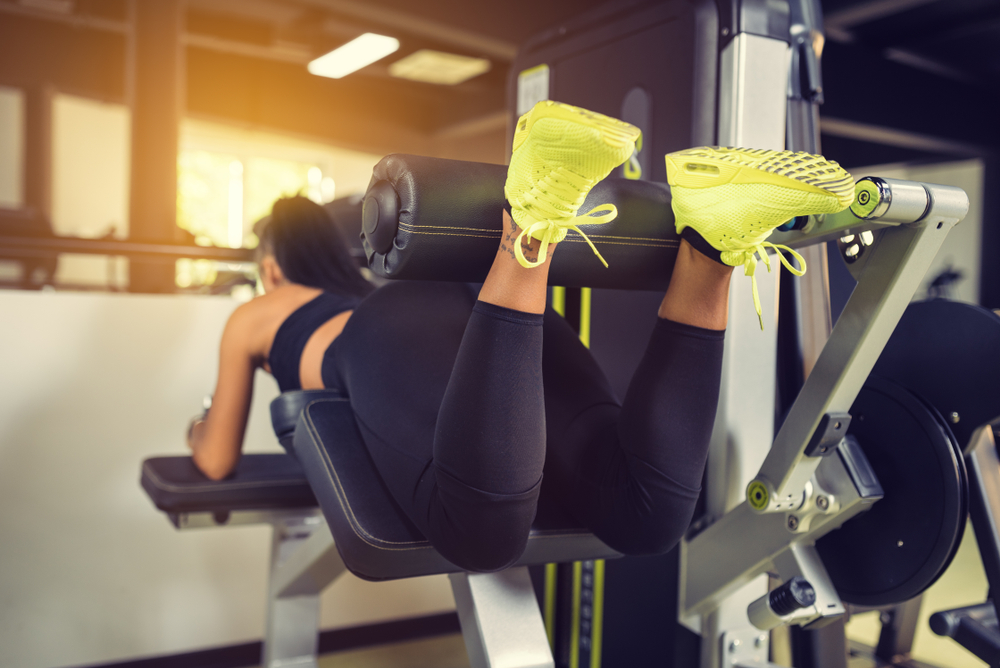
Your hamstrings work as partners with your quadriceps to stabilize your knee joint, but most people with knee problems neglect this muscle group because traditional hamstring exercises involve too much knee flexion.
Standing hamstring curls solve this problem while delivering a bonus: they simultaneously strengthen your glutes and challenge your core stability as you balance on one leg.
Standing Hamstring Curl Technique
- Setup: Stand with feet hip-width apart, holding onto a chair back or countertop for support
- Lift: Raise the heel of your affected leg toward the ceiling, bending only at the knee
- Range: Stay within your pain-free range—don't force the movement if discomfort appears
- Alignment: Keep your upper body and hips pointing straight forward throughout the lift
- Hold: Pause for 2-3 seconds at the top of your comfortable range
- Return: Lower your leg back to starting position with deliberate control
The standing position gives you complete authority over the movement.
Unlike machine-based hamstring curls that force you through predetermined ranges of motion, you can adjust the lift height based on what feels comfortable for your knee on any given day.
Progression and Control Advantages
Resistance options:
- Start with bodyweight until movement feels smooth and pain-free
- Add light ankle weights for increased challenge
- Use resistance bands around your ankles for variable resistance throughout the range
The beauty of this exercise lies in its self-limiting nature.
Your hamstrings get stronger without your knee joint bearing weight or moving through excessive ranges of motion.
The standing position also forces your core muscles to work as stabilizers, creating a functional exercise that mimics real-world balance challenges.
Since you control both the speed and range of motion, you can work your hamstrings progressively while respecting your knee's current tolerance level.
This approach builds strength without the setbacks that come from pushing through pain.
Safety Guidelines and Progressive Implementation
Exercising with knee problems requires a fundamentally different approach than normal strength training.
The goal shifts from pushing through discomfort to building strength within your body's current limitations, allowing your knees to gradually adapt without setbacks.
Pain Management Principles
Acceptable sensations:
- Mild muscle fatigue or burning in the working muscles
- Slight discomfort that disappears immediately after exercise
- General muscle soreness 24-48 hours later (similar to any workout)
Warning signs to stop immediately:
- Sharp, shooting, or stabbing pain during movement
- Pain that worsens as you continue the exercise
- Knee swelling or stiffness that increases after your workout
If you experience pain during any movement, consult your doctor or physical therapist before continuing.
Your knee pain might indicate underlying issues that need professional evaluation rather than exercise modification.
Progressive Loading Strategy
Start every exercise with just your body weight until you can complete full sets with perfect form and zero pain.
Only then should you consider adding external resistance.
Weight progression timeline:
- Weeks 1-2: Master bodyweight versions of all exercises
- Week 3: Add 5-pound ankle weights to one exercise at a time
- Weeks 4-8: Gradually progress to 10-pound maximum resistance
- Beyond 8 weeks: Focus on longer holds, more repetitions, or advanced variations
Implementation and Frequency
Perform these exercises 3 times per week on non-consecutive days, allowing your muscles time to recover between sessions.
The minimal equipment requirements—just your body weight and possibly light ankle weights—make them easy to incorporate into any daily routine.
Combine these strengthening exercises with gentle stretching to maintain flexibility while building muscle support around your knees.
This dual approach addresses both strength deficits and mobility restrictions that contribute to knee problems.
Professional Guidance and Scientific Foundation
This program should be performed under your doctor's supervision to ensure it aligns with your specific condition and rehabilitation goals.
Different knee problems require different exercise modifications, and a healthcare professional can help you identify which movements will provide the greatest benefit.
Recent research validates this approach: studies show that gluteal muscle strength directly influences knee joint mechanics, with stronger glutes reducing the forces that travel through your knee during daily activities.
Twelve-week gluteal strengthening programs consistently demonstrate improved hip muscle strength and significantly decreased knee joint loading during walking—proof that strengthening muscles around your knee actually protects the joint itself.
These exercises work because they engage the important muscle groups that support your knees while minimizing the movement and impact that typically cause knee aggravation.
The result is stronger legs that better protect your knees during both exercise and daily activities.
Conclusion
These five exercises prove that knee problems don't have to end your leg strengthening goals—they simply require a smarter approach that works with your body instead of against it.
You can build serious lower body strength while keeping your knees in comfortable, stable positions that promote healing rather than further damage.
Start with the bodyweight versions today, and you'll discover that protecting your knees and building strong legs aren't mutually exclusive goals.

